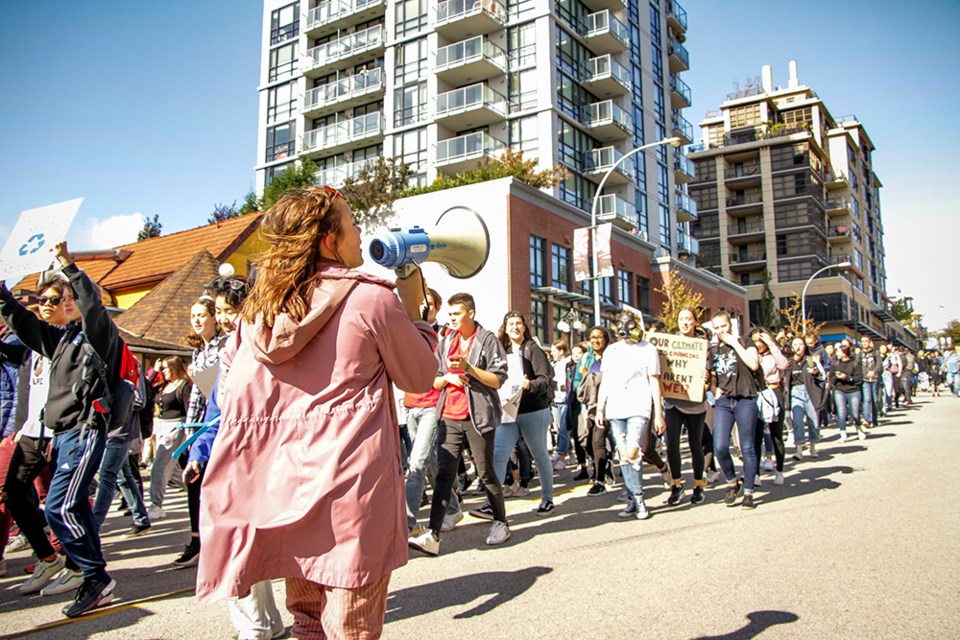New Westminster’s school board is working on a call from a group of students and members of the community to declare a climate emergency and to apply a climate lens to all of its decision-making.
The group, called SD40 for the Climate, spoke at the Oct. 15 operations committee meeting, and their presentation was received with applause by the board and staff.
SD40 for the Climate was spawned from the New Westminster Secondary environmental club in collaboration with members of the community in early August, said Grade 12 student Jade Bouchard, one of the organizers behind the group.
The idea for calling a climate emergency at the school district level came from the Victoria school district, which recently declared an emergency – potentially the first in Canada – Bouchard said.
“We got a bunch of really great resources from the Victoria group,” Bouchard said.
The group also held an info session to “mobilize more people and get the information out there about what our school district is doing and isn’t doing” in September, which Bouchard called “super, super successful.”
“They did such an impressive job with expressing their concerns and what they felt,” said Jennifer Nathan, a former science teacher at NWSS who is also involved in organizing for SD40 for the Climate.
On top of the fact that “every little bit counts” in terms of emissions reductions, Nathan said tackling this at the school level offers a bit of peace of mind for students.
“You can hear their fear and anxiety of the lack of action, so giving them a sense of agency, they just ran with it,” Nathan said of the students.
Bouchard said she expects the district not to just declare an emergency as a platitude without action to back it up.
“It’s really important that the action plan they come up with is substantial, will create a large impact,” Bouchard said.
Nathan said the task ahead is “daunting” and that she doesn’t expect the corporate sector to be the leaders. Instead, she said she expects elected officials to take charge in reducing emissions.
“Every time there’s a decision to be made, you can use a climate lens. So if you’re buying things that produce emissions, is there an alternative?” Nathan said.
“Can you think of other ways of supporting alternate transportation and that kind of thing?”
Nathan noted one deficiency off the bat: the new NWSS currently being constructed.
“It’s got LEED (Leadership in Energy and Environmental Design) standards, but there’s no solar panels or geothermal. (It’s) a missed opportunity to show that there’s a different way of building buildings now.”
Trustee Gurveen Dhaliwal, who worked with the group ahead of its committee presentation, pushed four recommendations to be sent to the full school board for approval.
That included a recommendation to declare a climate emergency, a recommendation to create a long-term environmental strategy by September 2020, one to implement climate literacy in the K-12 curriculum and one to write a letter to the ministers of environment and education to advocate climate literacy in schools and support for school districts seeking to reduce greenhouse gas emissions.
Of those recommendations, the first and fourth were passed on to school board for consideration, while the second and third were deferred to November for staff to bring more information to the table.
A climate strategy, according to the recommendation, would include measurable greenhouse gas-reduction targets and timelines; specifics around school district facilities, operations, transportation and procurement; costs associated with meeting climate targets; and opportunities for student and community engagement.



